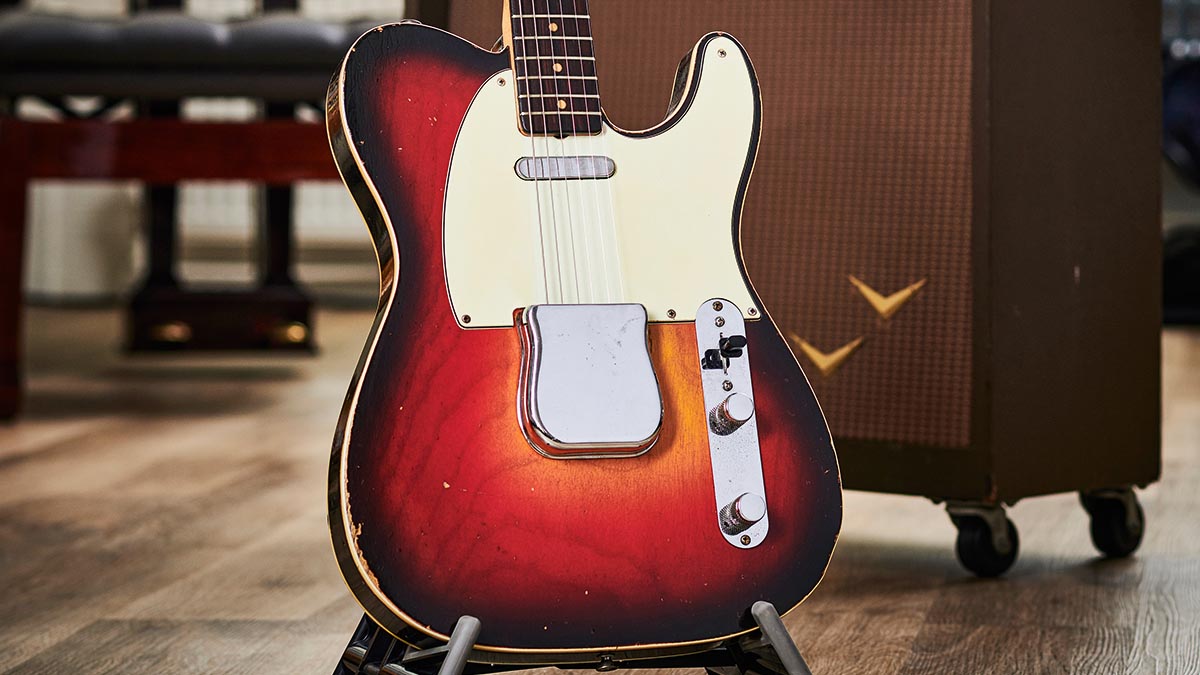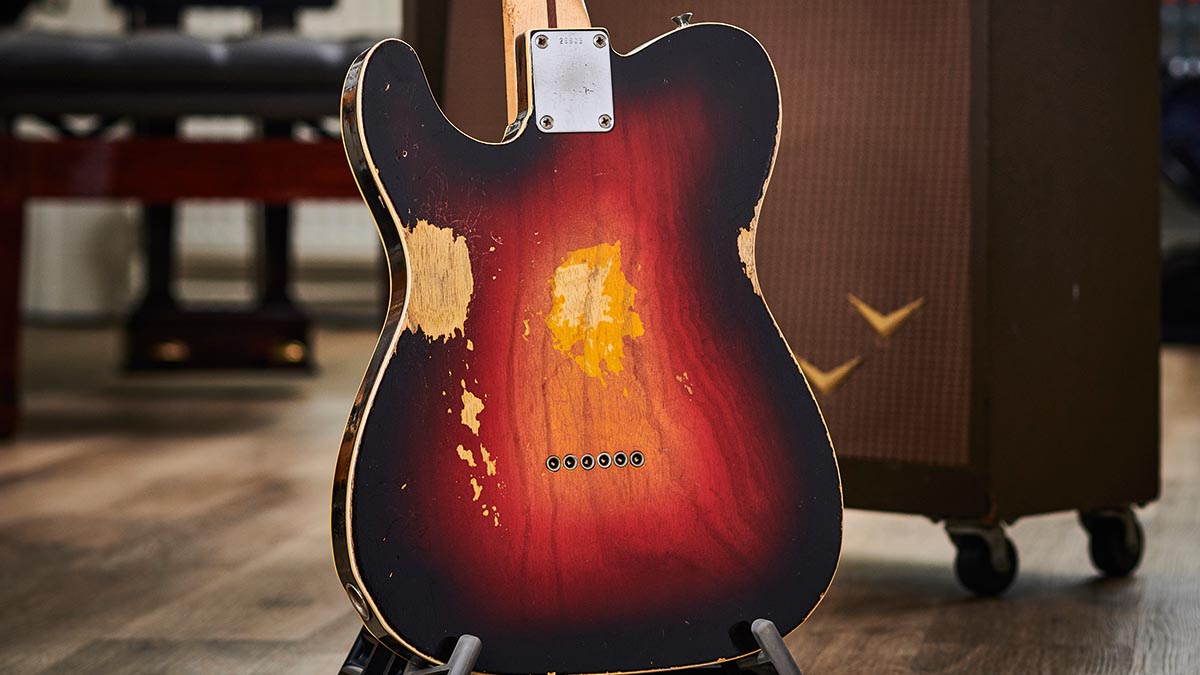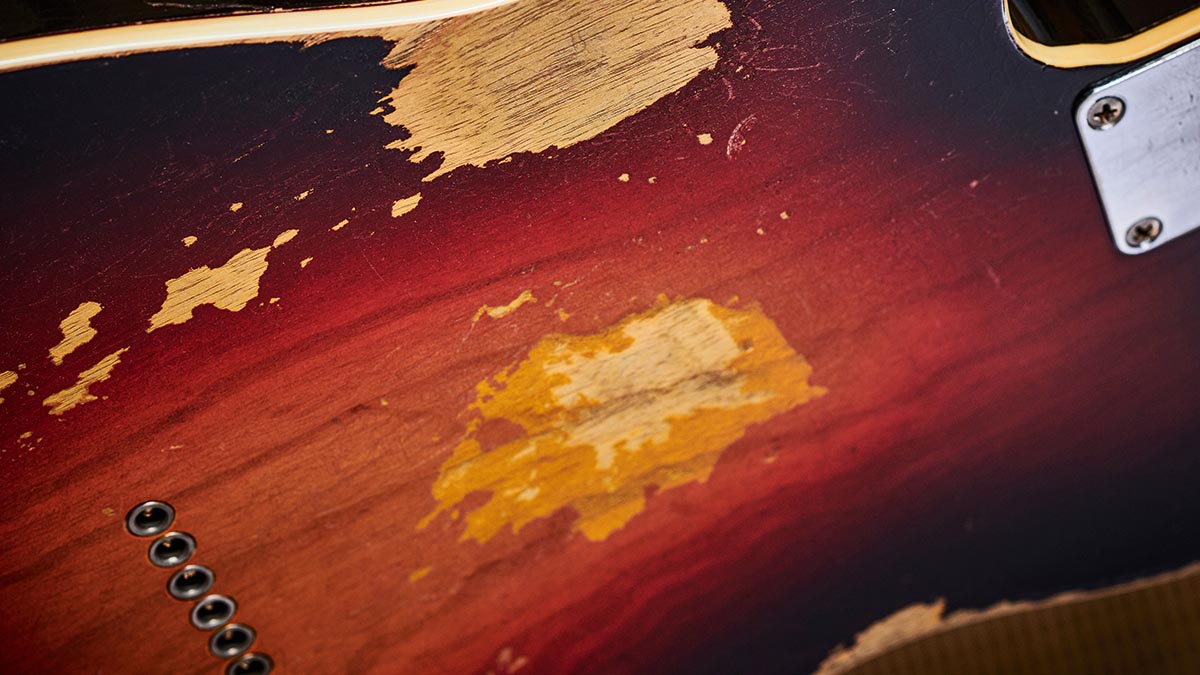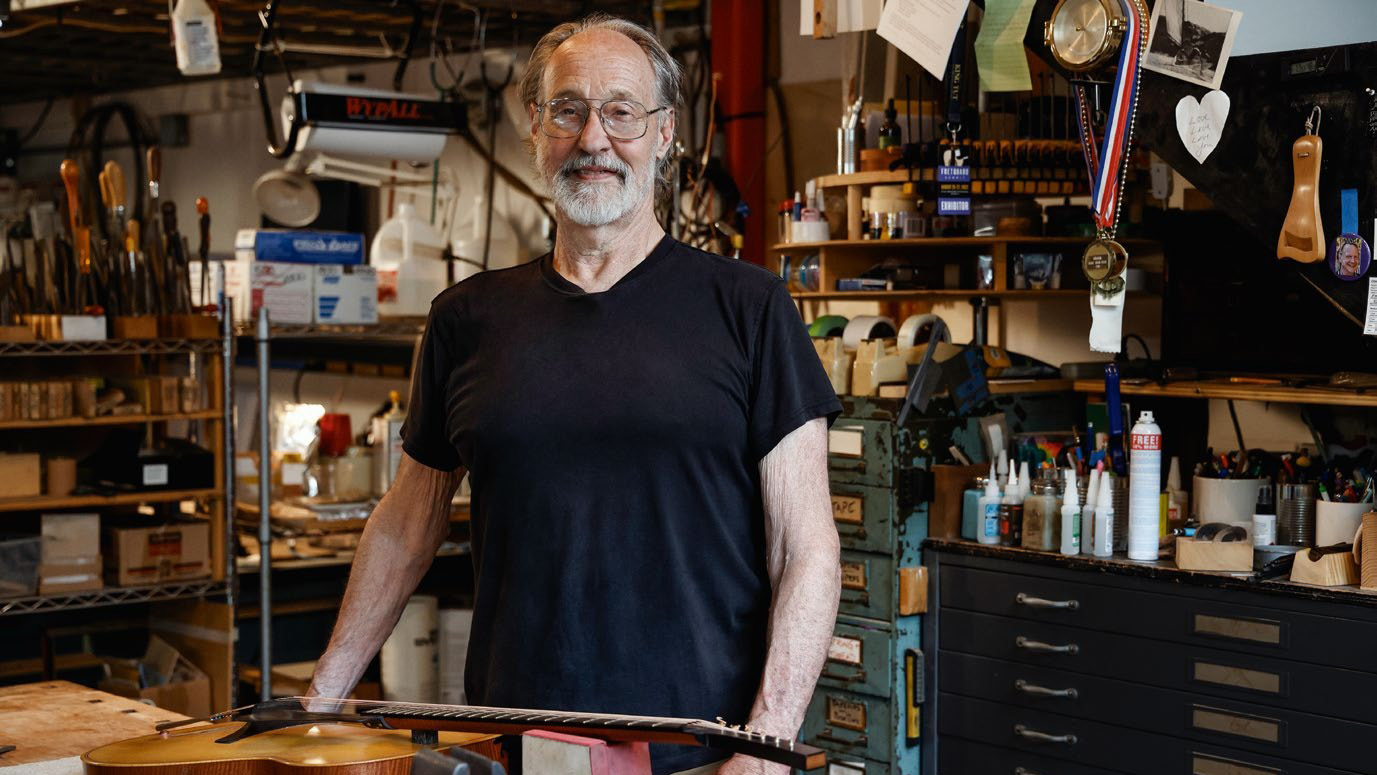The rise of the original Fender Telecaster Custom, the upmarket alternative to a utilitarian classic
Many say Leo Fender got it right the first time with the Telecaster, but that never stopped Fender seeking improvements, with the first, pre-humbucker incarnation of the Tele Custom adding some luxury to the ultimate workhorse electric

The pictured Telecaster Custom was expertly restored to original spec at ATB Guitars in Cheltenham, UK. By analysing the woodgrain, finish and other details such as neck date and pot codes, the team concluded it is the same prototypical instrument that appeared in Fender literature when the model was released in 1959.
Reads the ’59 catalogue: “The new Telecaster Custom dual pickup and Esquire Custom single pickup guitar offer all the fine playing and design features of the regular Telecaster and Esquire models plus custom treatment of the body and neck.”
Costing $229.50, the Custom Telecaster was touted as a fancier, upmarket alternative to the plain, utilitarian design of the regular $199.50 Tele. This “custom treatment” included a rosewood ’board, three-ply pickguard, bound body, and three-tone sunburst finish.

Appearing in ’58, the top-of-the-line Jazzmaster was the first Fender solidbody electric guitar to debut with a rosewood fretboard as standard, followed by the Telecaster and Esquire Customs. However, these models were not outstanding in this respect as one-piece fretted maple necks were superseded by rosewood-’board necks across the entire Fender line in ’59.
How rosewood ’boards compare with maple in terms of sound and feel will be debated ad infinitum, but they certainly tend to maintain their looks for longer, being darker in colour and lacquer-free. Interestingly, some really early rosewood-’board necks, like the one pictured, have a walnut truss-rod plug and ‘skunk stripe’ as per the fretted maple necks.
This guitar also features an ash body in the style of the regular/Blonde Teles, but such examples are very rare with alder being standard for Custom Teles and Esquires. Again, the effect on sound and feel/vibration is up for debate, but it’s an important distinction.

The very earliest Telecaster Customs had a regular Telecaster headstock decal, but within months they were sporting a bespoke “Custom Telecaster” version. Somewhat confusingly, Fender simultaneously referred to the model as a “Telecaster Custom”.
All the latest guitar news, interviews, lessons, reviews, deals and more, direct to your inbox!
When the black CBS-era headstock logo appeared in ’67, the decal reverted to just “Telecaster”. Several other important design alterations happened around that time, including the introduction of chrome-plated ‘F’ logo tuners and a matching neckplate.
But the most significant change in terms of sound arrived with a new circuit configuration that facilitated all three pickup combinations along with full tone control for each. From ’67 onwards, Fender listed prices for expanded options – notably a Fender/Bigsby vibrato and maple ’board (though it was possible to custom-order a guitar with a maple ’board prior to this).
Harder-wearing poly finishes began to replace nitro around ’68, and by 1970 the one-piece fretted maple neck had returned. By now, the Tele blueprint had been further developed in several different directions, with Mahogany, Rosewood, Paisley Red, Blue Flower and Thinline Teles joining the range.
In ’71, Fender introduced the Seth Lover-designed Wide Range humbucker by revamping the Thinline with a dual set. Prior to this, all Teles shared identical electronics.
Following suit, the original Telecaster Custom design gave way to a non-bound, four-knob, single-coil/humbucker combo guitar in ’72 (this second version has a stacked “Telecaster Custom” decal). The dual Wide Range ’bucker Telecaster Deluxe solidbody topped the Tele price list from ’73.
The evolution of the original Fender Telecaster Custom
- 1950: Esquire & Broadcaster released; ash body; fretted maple neck; blonde finish; single-layer pickguard
- 1951: Dual-pickup Broadcaster renamed Telecaster
- Mid-1959: Telecaster & Esquire Customs released; bound alder body; rosewood fretboard; 3-tone sunburst finish
- Summer 1959: 3-ply 5-screw pickguard changes to 3-ply 8-screw type
- 1962: Slab rosewood fretboard changes to veneer
- 1963/’64: Maroon sides (preceded and superseded by black)
- 1967: Circuit changes to standard 3-way switching with full tone control
- Late 1960s: “Fender/Bigsby Tremolo” and maple fingerboard options listed
- 1970: Fretted maple necks optional; Esquire Custom discontinued
- 1972: Telecaster Custom discontinued; Telecaster Custom version 2 released
Rod Brakes is a music journalist with an expertise in guitars. Having spent many years at the coalface as a guitar dealer and tech, Rod's more recent work as a writer covering artists, industry pros and gear includes contributions for leading publications and websites such as Guitarist, Total Guitar, Guitar World, Guitar Player and MusicRadar in addition to specialist music books, blogs and social media. He is also a lifelong musician.



